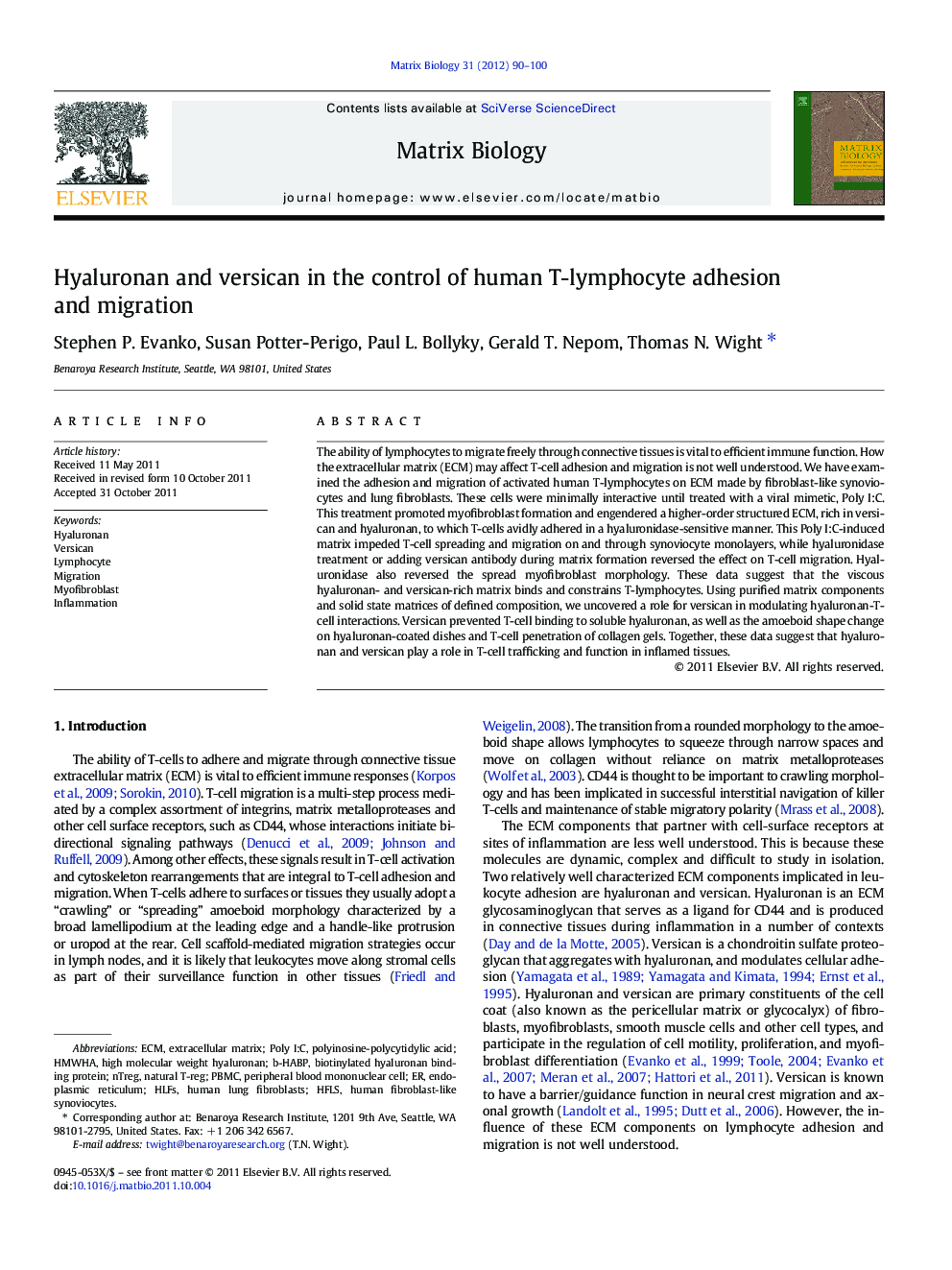| Article ID | Journal | Published Year | Pages | File Type |
|---|---|---|---|---|
| 2144873 | Matrix Biology | 2012 | 11 Pages |
Abstract
The ability of lymphocytes to migrate freely through connective tissues is vital to efficient immune function. How the extracellular matrix (ECM) may affect T-cell adhesion and migration is not well understood. We have examined the adhesion and migration of activated human T-lymphocytes on ECM made by fibroblast-like synoviocytes and lung fibroblasts. These cells were minimally interactive until treated with a viral mimetic, Poly I:C. This treatment promoted myofibroblast formation and engendered a higher-order structured ECM, rich in versican and hyaluronan, to which T-cells avidly adhered in a hyaluronidase-sensitive manner. This Poly I:C-induced matrix impeded T-cell spreading and migration on and through synoviocyte monolayers, while hyaluronidase treatment or adding versican antibody during matrix formation reversed the effect on T-cell migration. Hyaluronidase also reversed the spread myofibroblast morphology. These data suggest that the viscous hyaluronan- and versican-rich matrix binds and constrains T-lymphocytes. Using purified matrix components and solid state matrices of defined composition, we uncovered a role for versican in modulating hyaluronan-T-cell interactions. Versican prevented T-cell binding to soluble hyaluronan, as well as the amoeboid shape change on hyaluronan-coated dishes and T-cell penetration of collagen gels. Together, these data suggest that hyaluronan and versican play a role in T-cell trafficking and function in inflamed tissues.
Keywords
Related Topics
Life Sciences
Biochemistry, Genetics and Molecular Biology
Cancer Research
Authors
Stephen P. Evanko, Susan Potter-Perigo, Paul L. Bollyky, Gerald T. Nepom, Thomas N. Wight,
